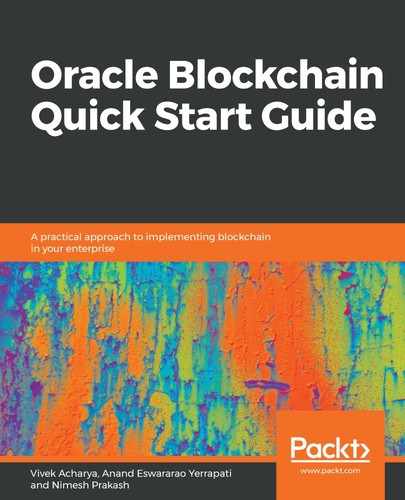So far, we have explored OBP and experimented with the development, deployment, and testing of chaincode on OBP. This section is a recap of the Integration architecture section of Chapter 3, Delving into Hyperledger Fabric. The following integration architecture diagram highlights three integration options with OBP: REST, SDK, and events.
When building and integrating a client with OBP using REST APIs—refer to the Testing chaincode from REST endpoints section—it helps to understand the use of REST endpoints to invoke chaincode transactions. REST endpoints can be integrated with the client applications and can execute them by passing the respective headers, such as authorization, Content-Type, and the input JSON, including the mandatory channel name and chaincode name fields and the required arguments. The response is also a REST JSON, which should be handled in the client application. For connecting blockchain using client SDK, REST APIs are provided by OBP. REST APIs allows flexibility to invoke, query, and view the status of a transaction. However, if much more fine-grained operations are required in applications, then the HLF SDK is an alternative approach:

Refer to the Integration architecture section of Chapter 3, Delving into Hyperledger Fabric, for a sample-based integration strategy for applications with blockchain.
